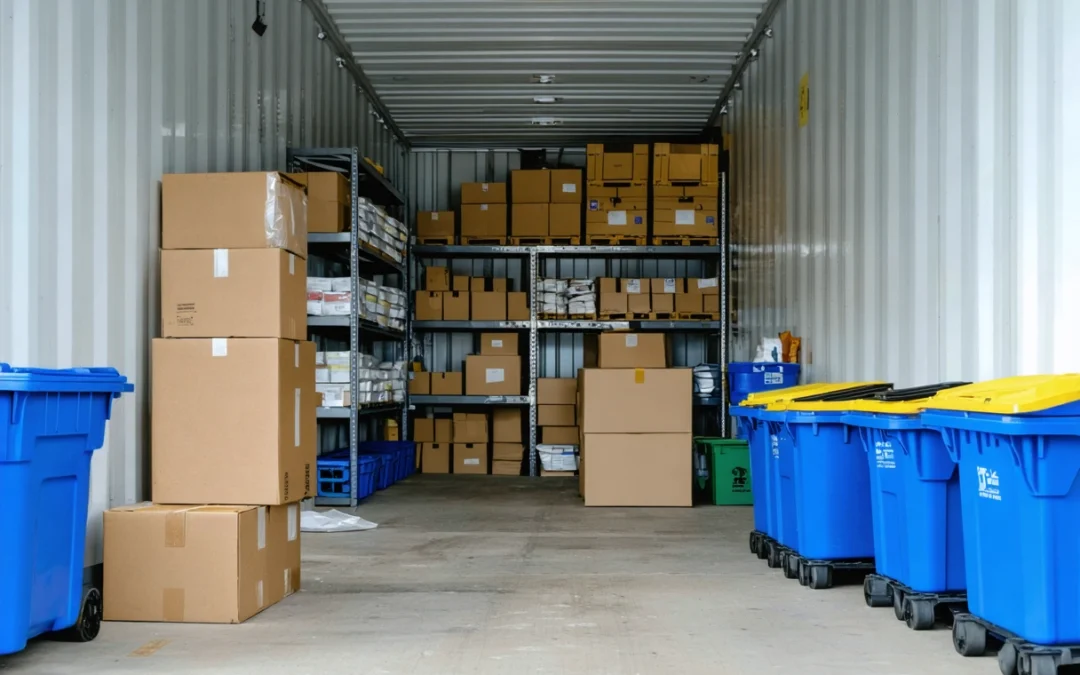Maximizing Space: How to Organize Your On-Site Storage Container Efficiently
On-site storage containers have become essential for businesses, contractors, and even homeowners looking to gain extra space for storing equipment, inventory, or household items. Yet, having a storage container is only half the battle; efficiently organizing it ensures you make the most of every square inch, keep your items secure, and prevent the chaos that can come from a cluttered space. In this comprehensive guide, you will discover expert strategies and actionable tips for maximizing space in your on-site storage container, optimizing organization, and maintaining easy access to your stored items.
Whether you’re managing construction site tools, stashing away seasonal household goods, or safeguarding valuable business inventory, the way you organize your storage container can dramatically impact your workflow and peace of mind. Read on to learn how to transform your storage container from a simple box into a powerhouse of efficiency and order.
Why Efficient Storage Container Organization Matters
At first glance, it might seem that simply filling your container with items as you go is sufficient. However, poor organization often leads to wasted space, damaged goods, and lost time searching for what you need. Efficient organization maximizes usable space, increases safety by reducing the risk of accidents, and ensures that your items remain in good condition.
For businesses, the advantages are even greater. Well-organized containers support workflow efficiency, help maintain accurate inventory, and allow for quick retrieval of materials or tools. For homeowners, it means being able to access your holiday decorations or lawn equipment without the headache of digging through piles of boxes. Ultimately, organization translates to time and cost savings for everyone.
Planning Your Storage Container Layout
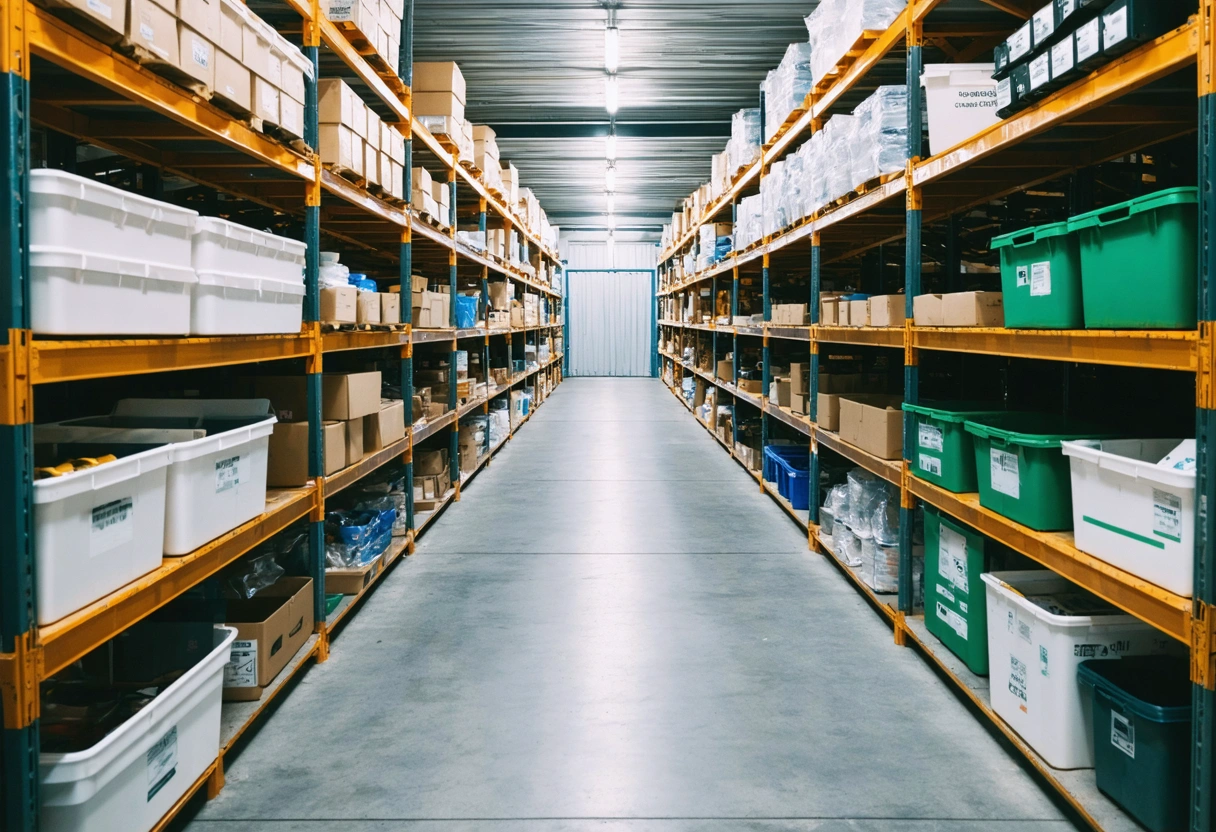
Before you start loading your storage container, take time to plan your layout. Proper planning is the foundation of an organized, efficient storage space. Assess the types and sizes of items you need to store, and consider how frequently you’ll need to access each item. Group items by category, such as tools, supplies, or documents, and assign each group a designated area within the container.
An effective layout typically includes:
- Zones for different types of items: Place frequently accessed items near the entrance, and less-used items toward the back.
- Clear aisles: Leave a walkway down the center or along one side of the container so you can reach all areas without moving everything around.
- Vertical storage: Make use of the full height of the container with shelving units or stacking boxes.
Sketching a simple floor plan can help you visualize the space and avoid common pitfalls, such as blocking access to essential items. For more guidance on space planning, check out this resource on organizing storage spaces for maximum efficiency.
Choosing the Right Shelving and Racking Systems
One of the most effective ways to maximize space in your storage container is to install shelving or racking systems. These allow you to use vertical space, keep items off the floor, and maintain organized groupings by category or size. Choose heavy-duty shelving that can support the weight of your items and withstand the conditions inside the container, such as humidity or temperature fluctuations.
Adjustable shelves provide flexibility as your storage needs change. Wall-mounted racks are ideal for tools, ladders, and long-handled equipment, while modular shelving can be reconfigured to suit new organizational strategies. Investing in quality shelving pays off by reducing clutter and creating a more accessible environment.
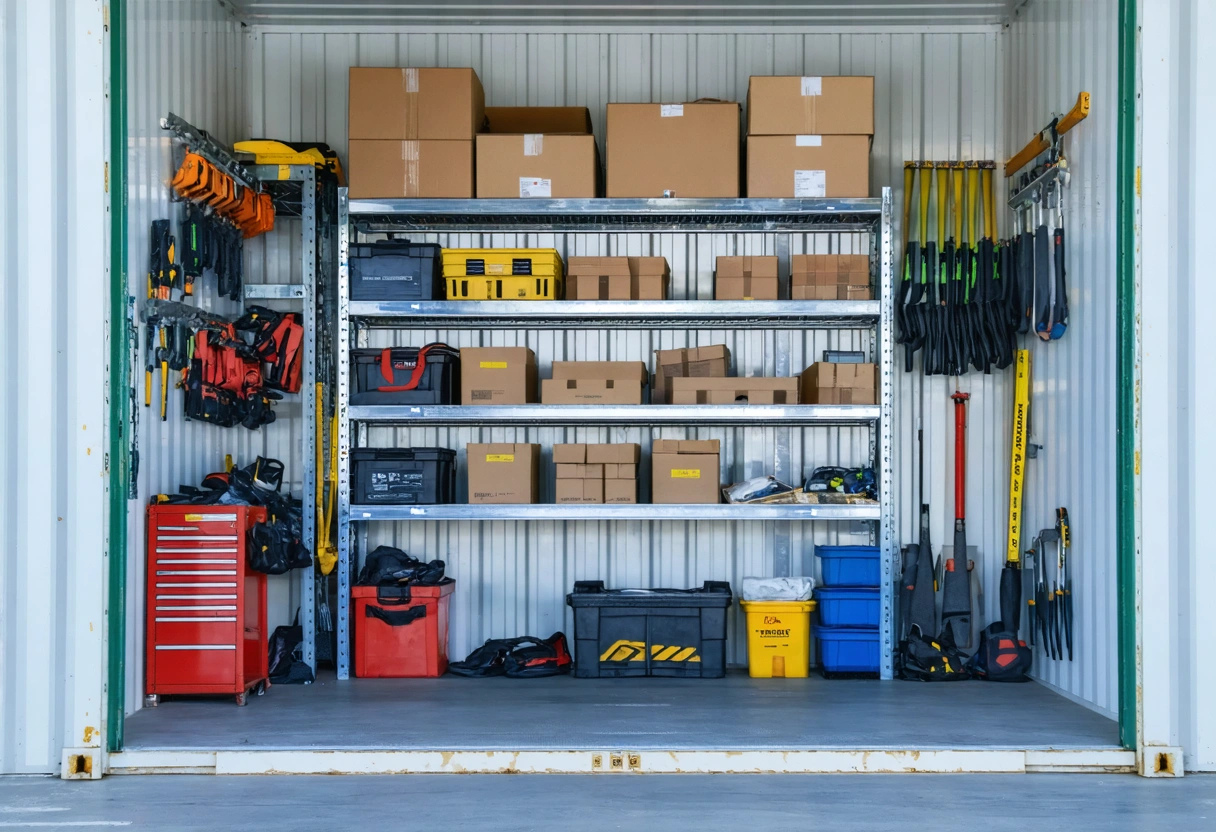
Packing Strategies for Optimal Space Utilization
Packing your storage container is both an art and a science. The goal is to fit as much as possible without creating a jumbled mess or risking damage to your items. Start by packing the heaviest, bulkiest items on the bottom and towards the back. Stack lighter boxes and items on top. Distribute weight evenly to prevent the container from becoming unbalanced, which is particularly important if your container is being transported.
Use uniform-sized boxes whenever possible for easier stacking and stability. Fill boxes completely to prevent them from collapsing, but avoid overpacking, which can lead to breakage. Label every box clearly on multiple sides so you can identify contents without opening them. For further tips on packing efficiency, consult this detailed guide on how to pack and organize a storage unit.
Utilizing Vertical and Overhead Space
Many people overlook the potential of vertical space, but the height of your container is one of its most valuable assets. Install tall shelving units and use stackable bins to reach the ceiling. For items that are infrequently used, such as seasonal decorations or spare parts, the overhead area is the perfect spot. Ceiling-mounted racks or hooks can be used for lightweight items like hoses, extension cords, or sports equipment.
If you need inspiration on maximizing vertical storage, check out the storage ideas for small spaces provided by experts. Remember, safety comes first: always secure shelves and overhead racks properly to avoid accidents.
Inventory Management and Access Strategies
Keeping track of what’s inside your storage container is crucial, especially if you frequently add or remove items. Create a detailed inventory list, either on paper or using a digital tool, and update it regularly. Include descriptions, quantities, and locations within the container. This practice saves time and prevents the frustration of searching for lost items.

For containers used on job sites or for business purposes, consider implementing a barcode system or inventory management software. Label each section or shelf and cross-reference with your inventory list. For more on inventory management techniques, the inventory management best practices article offers a range of effective solutions.
Creating a Logical Retrieval System
Efficient organization is not just about how items are stored, but also how easily they can be retrieved. Designate specific areas for different categories, such as “tools,” “supplies,” or “personal items.” Use color-coded labels or bins to make identification quick and intuitive. Maintain an accessible aisle, and avoid stacking items in a way that blocks access to frequently used goods.
Regularly review and reorganize your container as your needs change. A periodic audit ensures that the most important items remain accessible and that outdated or unnecessary items are removed.
Optimizing for Safety and Security
Safety should never be compromised when organizing an on-site storage container. Overloaded shelves or precariously stacked boxes can create hazards. Always follow load capacity guidelines for shelves and racks, and secure heavy items to prevent shifting. Use non-slip mats on the floor to minimize the risk of slips, especially in damp environments.
Security is equally important, particularly if your container is storing valuable equipment or inventory. Install a high-quality lock, and consider additional security measures such as motion sensor lighting or cameras. For more insights on securing your storage space, refer to this guide on storage safety practices.
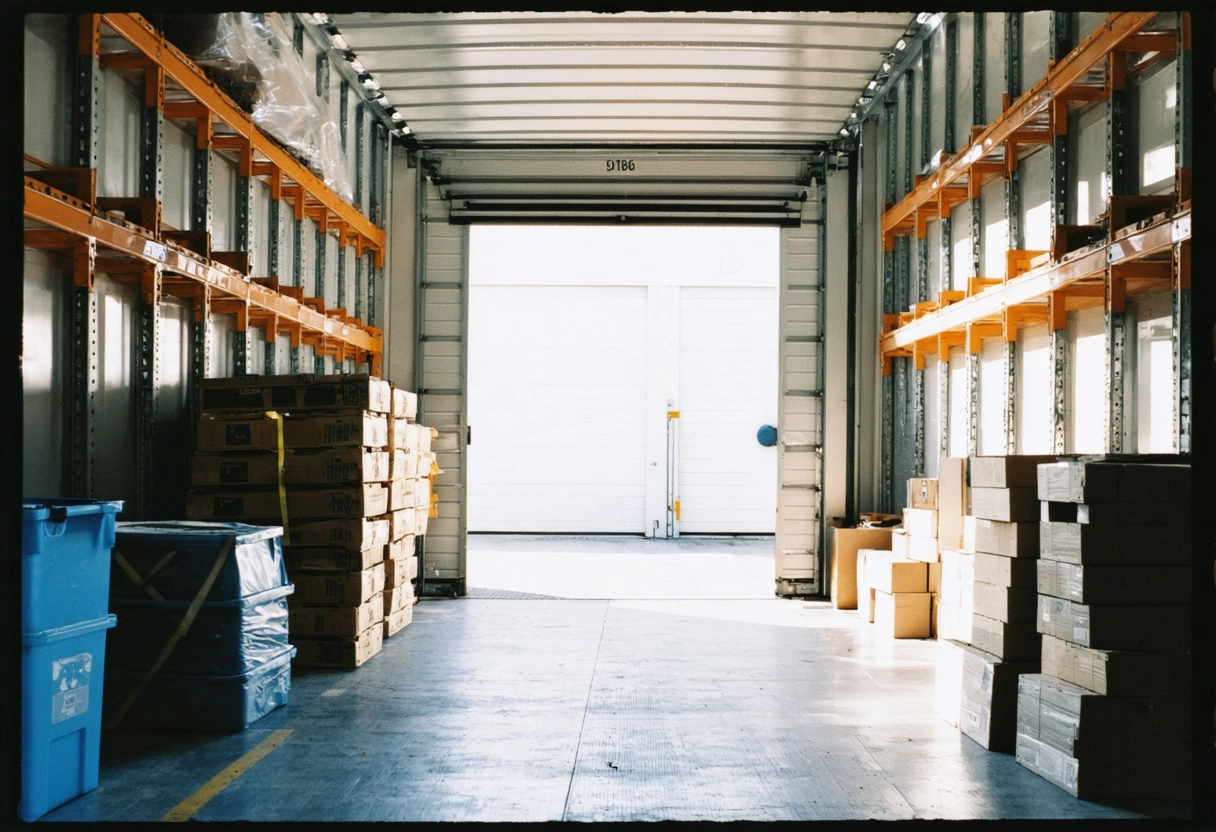
Climate Control and Maintenance Tips
Depending on what you’re storing, you may need to address climate control. Sensitive items like electronics, documents, or certain materials can be damaged by extreme temperatures or high humidity. Use desiccant packs, moisture absorbers, or portable dehumidifiers to manage moisture. Ensure air can circulate by leaving small gaps between items and the walls of the container.
Regular maintenance is key to prolonging the life of your container and its contents. Inspect for leaks, rust, or pest intrusion, and address any issues promptly. Keeping your container clean and well-maintained will prevent damage and make organization easier in the long run.
Creative Storage Hacks and Advanced Organization Methods
Sometimes, thinking outside the box (or, in this case, inside the box) can lead to innovative storage solutions. Use magnetic strips to hold metal tools or hardware on the walls, or install pegboards for flexible tool arrangement. Rolling carts can be a game changer for mobile storage needs, allowing you to move tools or parts where you need them and then roll them back into the container.
For businesses with rotating inventory or high turnover, consider a FIFO (First-In, First-Out) system to ensure older items are used before newer stock. This method is particularly useful for construction materials, retail inventory, or event equipment. For more creative organization ideas, a look at these clever storage ideas for every room can inspire solutions tailored to your needs.
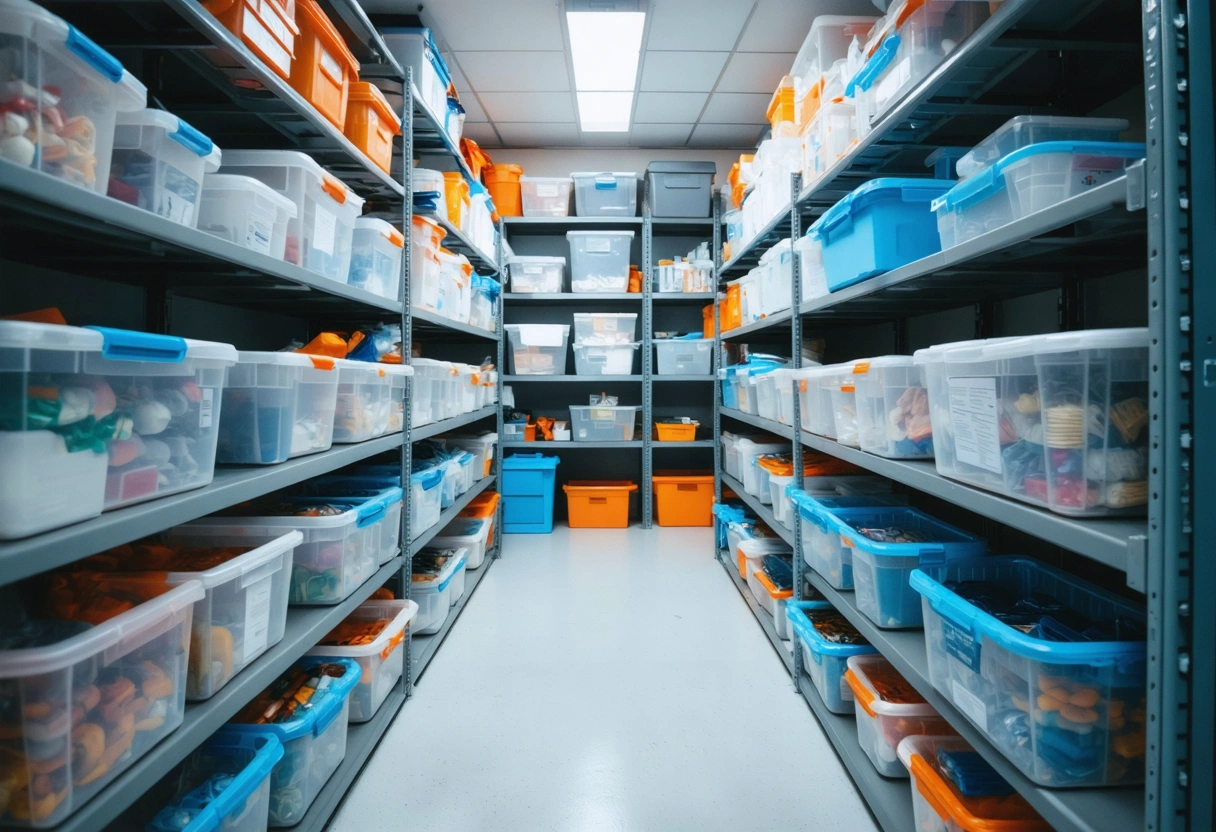
Modular and Flexible Organization Solutions
Modular storage bins and crates are perfect for containers that need to adapt to changing storage needs. Stackable, interlocking bins can be moved or rearranged as required. If you frequently add or remove large items, use foldable shelves or adjustable racking systems that can be repositioned quickly.
Consider using clear storage containers for smaller items, so you can see contents at a glance. Dividers, drawer organizers, and hanging organizers add even more flexibility and help keep small parts or tools from getting lost in the shuffle.
Unlocking the Full Potential of Your Storage Container
Efficiently organizing your on-site storage container is not just about tidiness; it’s about maximizing space, boosting productivity, and protecting your valuable assets. With careful planning, the right shelving and packing strategies, diligent inventory management, and a focus on safety, you can transform your storage container into an organized, accessible, and highly functional asset.
By leveraging vertical space, using modular storage solutions, and implementing logical retrieval systems, you make every square inch work for you. Regular maintenance, climate control, and robust security ensure your container remains a safe and effective storage environment for years to come. For even more detailed advice on maximizing your storage, explore this expert overview on organizing storage rooms efficiently.
With these comprehensive strategies and actionable tips, you’ll not only maximize the space in your on-site storage container but also create an organized system that saves you time, money, and stress. Start today, and experience the benefits of an expertly organized storage solution.
Need help with Maximizing Space: How to Organize Your On-Site Storage Container Efficiently?


